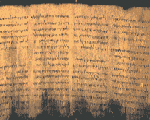




In preparing the Threshold Test Ban Treaty (TTBT) in July 1974, the United States and the Soviet Union recognized the need to establish an appropriate agreement to govern underground nuclear explosions for peaceful purposes (PNEs). There is no essential distinction between the technology of a nuclear explosive device which would be used as a weapon and the technology of a nuclear explosive device used for a peaceful purpose.Negotiations on the PNE agreement contemplated in Article III of the TTBT began in Moscow on October 7, 1974, and after six negotiating sessions over a period of 18 months, resulted in the Treaty on Underground Nuclear Explosions for Peaceful Purposes in April 1976. The agreement consists of a Treaty, a detailed protocol to the Treaty, and an agreed statement delineating certain important activities which do not constitute a peaceful application as that term is used in the Treaty.
The PNE Treaty governs all nuclear explosions carried out at locations outside the weapons test sites specified under the Threshold Test Ban Treaty.
In the PNE Treaty the United States and the Soviet Union agreed: not to carry out any individual nuclear explosions having a yield exceeding 150 kilotons; not to carry out any group explosion (consisting of a number of individual explosions) having an aggregate yield exceeding 1,500 kilotons; and not to carry out any group explosion having an aggregate yield exceeding 150 kilotons unless the individual explosions in the group could be identified and measured by agreed verification procedures. The parties also reaffirmed their obligations to comply fully with the Limited Test Ban Treaty of 1963.
The parties reserve the right to carry out nuclear explosions for peaceful purposes in the territory of another country if requested to do so, but only in full compliance with the yield limitations and other provisions of the PNE Treaty and in accord with the Non-Proliferation Treaty.
Articles IV and V of the PNE Treaty set forth the agreed verification arrangements. In addition to the use of national technical means, the Treaty states that information and access to sites of explosions will be provided by each side, and includes a commitment not to interfere with verification means and procedures.
The protocol to the PNE Treaty sets forth the specific agreed arrangements for ensuring that no weapon-related benefits precluded by the Threshold Test Ban Treaty are derived by carrying out a nuclear explosion used for peaceful purposes, including provisions for use of the hydrodynamic yield measurement method, seismic monitoring and on-site inspection.
The agreed statement that accompanies the Treaty specifies that a "peaceful application" of an underground nuclear explosion would not include the developmental testing of any nuclear explosive. Such testing must be carried out at the nuclear weapon test sites specified by the terms of the TTBT, and therefore, is treated as the testing of a nuclear weapon.
The provisions of the PNE Treaty, together with those of the TTBT, establish a comprehensive system of regulations to govern all underground nuclear explosions of the United States and the Soviet Union. The interrelationship of the TTBT and the PNE Treaty is further recognized by their identical five-year durations, and by the provision that neither party may withdraw from the PNE Treaty while the TTBT remains in force. Conversely, either party may withdraw from the PNE Treaty upon termination of the TTBT.
The PNET and the TTBT were both submitted to the Senate for its advice and consent on June 28, 1990. Following the Senate's approval of the treaties, the United States and the Soviet Union exchanged instruments of ratification and the treaties entered into force on December 11, 1990.
A Joint Consultative Commission was established to discuss any questions of compliance, to develop further details of the on-site inspection process as needed, and to facilitate cooperation in various areas related to which might be mutually beneficial.
